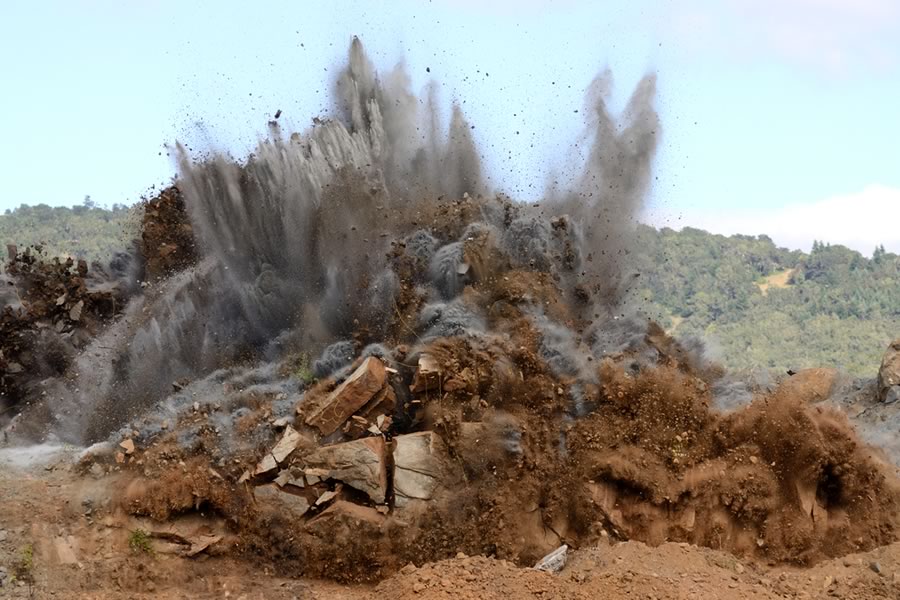Rock quarries create invisible dust particles proven to cause silicosis—a progressive, incurable lung disease. Long-term exposure to particulate matter is strongly associated with heart disease, stroke, infertility, and pregnancy complications.
Proven Health Hazard
Dust created by gravel quarries is considered respirable crystalline silica, a type of particulate matter. Studies have established a strong link between these particles and the following health effects:
Over 12,000 residents within five miles of the proposed quarry will be affected by cascading injurious events resulting from particulate matter carried by prevailing winds. Young children, the elderly, and those with respiratory illnesses such as COPD, emphysema, asthma, and progressive lung disease will be most impacted.
The San Antonio-New Braunfels metro area has pediatric asthma rates of 1 in 7 (nearly twice the national average) and Comal ISD already has over 2000 students with an asthma health alert on file. Particles produced by rock-crushing operations will increase air pollution and exacerbate this health risk for Comal ISD students.


- Health Risks Associated with Exposure to Airborne Pollutants Arising From Quarrying and Aggregate Processing
- Airborne Particulate Matter (PM) Exposure and Health Risks Associated with APOs in Texas
- Air Quality and the Limestone Aggregate Industry in Comal County, Texas: A Call for Policy Change
- Evidence that Comal County Residents May Be at Risk for Exposure to Air Pollution from the Aggregate Industry
Invisible Toxins
You can’t even see it—but you’re certainly breathing it. Respirable crystalline silica is categorized and monitored as PM 2.5 (fine particulate matter 2.5 micrometers or smaller—less than 1/20 the width of a human hair) and PM 10 (10 micrometers or smaller). Both sizes are inhaled and can go directly to lungs and bloodstream.
Quarry blasting, crushing, and hauling operations emit high levels of carcinogenic particulate matter. Visible dust (larger particles) is also created by movement of front-end loaders, mining trucks, transfer conveyors, excavators, bulldozers, and utility vehicles.
Over 80 formal complaints have been filed against Vulcan in Texas alone. And over 35 violations occurred at a single Vulcan Materials plant (Loop 1604 in San Antonio).
Violations at Vulcan Plant in San Antonio
With Vulcan’s samples they found silica and manganese inside my home, and that’s unlike a typical household profile. Outside they found fly ash, which is very toxic. There are permit violations dating back all the way to 1991.
Noxious Gas & Air Pollution
Daily emissions of diesel exhaust from plant equipment and hundreds of gravel trucks generate nitrogen oxide, sulfur dioxide, carbon monoxide, and volatile organic compounds (VOCs).
Additionally, when these pollutants combine with sunlight, they create ozone. The San Antonio region’s air quality continues to worsen with higher and higher ozone levels exceeding the nation’s health-based standards. With these ozone violations predicted to mark us with a “non-attainment” status, by August 2018 we should expect the EPA to issue their ozone designation decision for eight counties in the San Antonio-New Braunfels Area.
The proposed quarry and the additional truck traffic would significantly impact regional air quality, even beyond a five-mile radius of the quarry site.


Air Pollution News & Updates
Media Coverage in 2022
March 9, 2023
TV, radio, and newspaper media coverage during 2022 of the proposed Vulcan quarry in Comal County, Stop 3009 Vulcan Quarry, and Friends of Dry Comal Creek.
Media Coverage
January 1, 2022
TV, radio, and newspaper media coverage of the proposed Vulcan quarry in Comal County, Stop 3009 Vulcan Quarry, and Friends of Dry Comal Creek.
Media Coverage in 2021
December 31, 2021
TV, radio, and newspaper media coverage during 2021 of the proposed Vulcan quarry in Comal County, Stop 3009 Vulcan Quarry, and Friends of Dry Comal Creek.
Important Quarry and APO Legislation Needs Your Support
April 12, 2021
Our top quarry and aggregate production operations (APO) bill (HB 4341) is stuck in the Environmental Regulation Committee. We need your help!